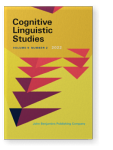Vol. 9:2 (2022) ► pp.323–340
Neology pathways
An analysis of holonymy/meronymy and hypernymy/hyponymy
A quantitative analysis of the Italian lexicon has been made, focusing on the semantic relationships of meronymy/holonymy and hyponymy/hypernymy. The study used two lexicographical sources, together representing one of the largest structured Italian datasets. Within the theoretical debate on the ontolex interface, the aforementioned semantic relationships can be particularly interesting, assuming their closeness to crucial aspects of cognition. In this framework, the collected evidence legitimates some hypotheses on the pathways that underlie lexical and semantic neology: the direction from holonym to meronym(s) appears more productive than the opposite, suggesting that the conceptualization of an object as a whole is more likely to stimulate further conceptualization of parts, members or substance. The same top-down direction from species to genus (genera), prevails in hypernyms/hyponyms. Recurring trends of use rates, first attestation dates, and correlation rates can be exploited further to discuss the issue of cognitive economy and the ways in which it manifests itself in language.
Article outline
- 1.Introduction
- 2.Materials and methods
- 3.Results
- 4.Discussion
- 5.Conclusion
-
References
